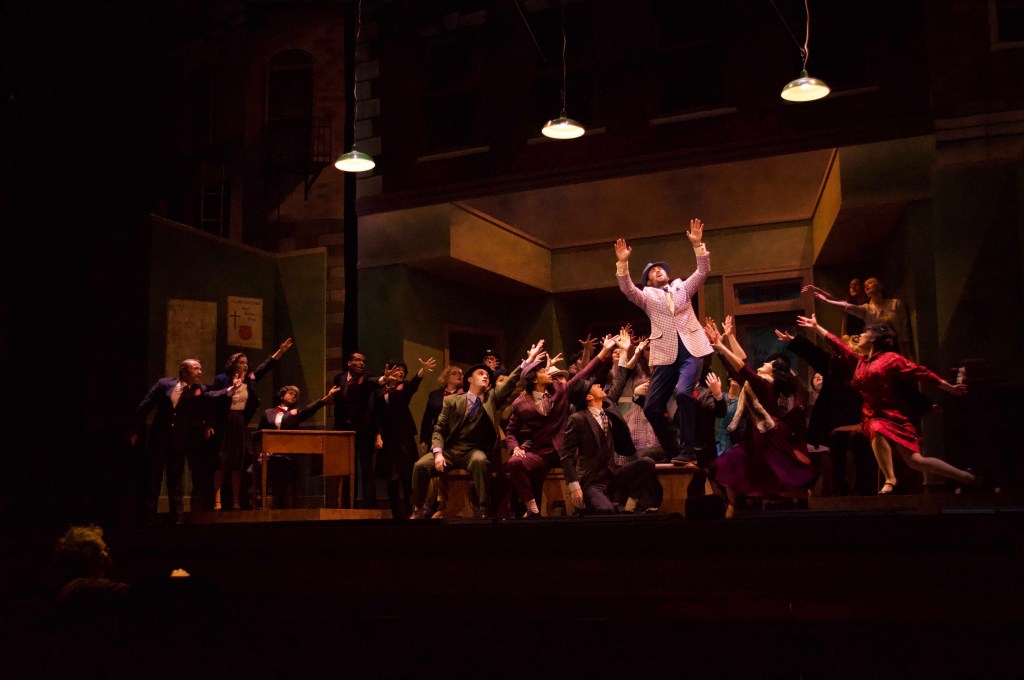Howard Goodall’s Eternal Light: A Requiem Saturday at 8
By Peter Alexander March 31 at 11:35 p.m.
Howard Goodall wanted to write a Requiem for the living.
The English composer was not interested in creating a piece about the terrors of the last judgment that often feature heavily in older settings of the Latin Requiem. Instead, he composed a piece “intended to provide solace to the grieving,” he writes, comparing it in this respect to Brahms’s German Requiem.
Goodall’s 2008 work Eternal Light: A Requiem will be performed by the Boulder Chamber Orchestra (BCO) and Boulder Chamber Chorale—probably a Colorado premiere—at 8 p.m. Saturday (April 2) at the Boulder Adventist Church. Bahman Saless will conduct.
Also on the program is one the BCO’s most popular pieces from past concerts, the Suite Antique by John Rutter. The performance will feature flutist Rachelle Crowell, a member of the BCO (full details below).
When Saless first heard Eternal Light, he was captivated by the piece for two reasons. For one, it is a contemporary piece that should have broad appeal. “The piece is so approachable and so beautiful,” he says. “It has beautiful melodies, gorgeous violin solos and arias, and I thought here’s a piece that we can bring to the world and say ‘Hey, look! There is something really awesome here! Listen!’”
The second reason was more personal. “(Goodall) uses poetry from England, and also brings Church of England hymn tunes into it,” Saless explains. “I went to high school in England, and every morning we had to get up and sing these beautiful hymn tunes. So a couple of the pieces hit me directly in my heart and in my past of being a schoolboy in England. That was another reason I fell in love with it.”
The inclusion of English poetry was part of Goodall’s aim of creating a Requiem that focuses on consolation for the grieving. “The writing of a Requiem is a special challenge for any composer,” he writes. “For me, a modern Requiem is one that acknowledges the unbearable loss and emptiness that accompanies the death of loved ones, a loss that is not easily ameliorated with platitudes about the joy awaiting us in the afterlife.”
Goodall’s solution was to create his own text for the Requiem, using English poetry to comment on the liturgical text, and adding movements not part of the usual liturgy. Some movements that juxtapose the Latin liturgical text with English poetry recall Benjamin Britten’s War Requiem (“Kyrie: Close now thine eyes”). Other movements stick entirely to the Latin text—e.g., “Agnus Dei” (Lamb of God).
The “Dies Irae” (Day of wrath) movement drops the Latin text describing the agonies of the final judgment entirely, setting in its place John McCrae’s well known First World War-era poem “In Flanders Fields.” The “Lacrimosa” (Tearful) movement does the same, using the 17th-century poem by Phineas Fletcher “Drop, drop slow tears,” which was set by the Renaissance composer Orland Gibbons and used as a hymn text in the English church.
Another unusual aspect of the Requiem is that it was commissioned as a dance piece as well as a choral-orchestral piece. None of the movements are labelled as dances, but Saless notes that parts are “somewhat dance-y. It’s really a new concept,” he says.
The score calls for chorus and string orchestra, with other parts that can be handled with some flexibility. For the BCO performance, the strings will be supplemented by a piano and an electronic keyboard with harp and organ sounds.
Goodall’s compositional output marks him as a composer who can write accessible music for a broad audience. In addition to his choral works, he has composed musical theater pieces and music for film and television. These include the film Mr. Bean and the highly popular Mr. Bean television series, two of Goodall’s many collaborations with the actor and comedian Rowan Atkinson.
Saless decided to fill out the program with Rutter’s Suite Antique. BCO has performed the suite several times, and their YouTube video with flutist Cobus DuToit has received more than 77,000 hits. “This is our most popular YouTube video,” Saless says.
The score is nearly a flute concerto, with the instrument featured as soloist in each of the six movements. Scored for strings, harpsichord and flute, it is reminiscent of Baroque dance suites, with movements titled Prelude, Ostinato, Aria, Waltz, Chanson and Rondeau. The score adheres comfortably to Rutter’s usual accessible and unchallenging style.
“The other nice thing about the concert choice is that it’s basically a British composers concert,” Saless says. “And they’re both alive, so you can chalk that against performing contemporary music!”
Saless originally planned to perform Eternal Light two years ago, as a consoling musical gesture to audiences during the pandemic. “It’s been one of my goals to bring this to Boulder,” he says, but the original plans had to be postponed. Now that it finally will be performed, he says, “I’m really excited.”
# # # # #
“Eternal Light”
Boulder Chamber Orchestra, Bahman Saless, conductor
With Rachelle Crowell, flute, and Boulder Chamber Chorale, Vicki Burrichter, director
- John Rutter: Suite Antique
- Howard Goodall: Eternal Light: A Requiem
8 p.m. Saturday, April 2
Boulder Adventist Church, 345 Mapleton Ave.

























